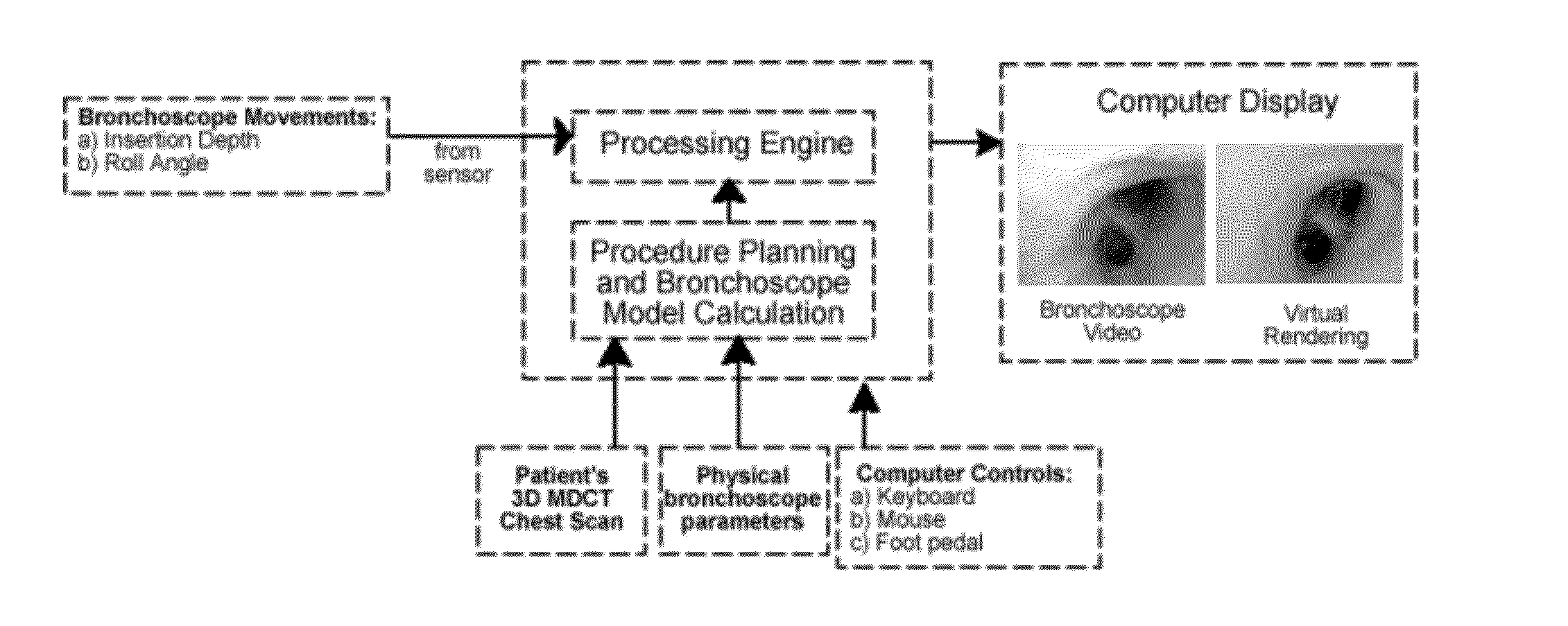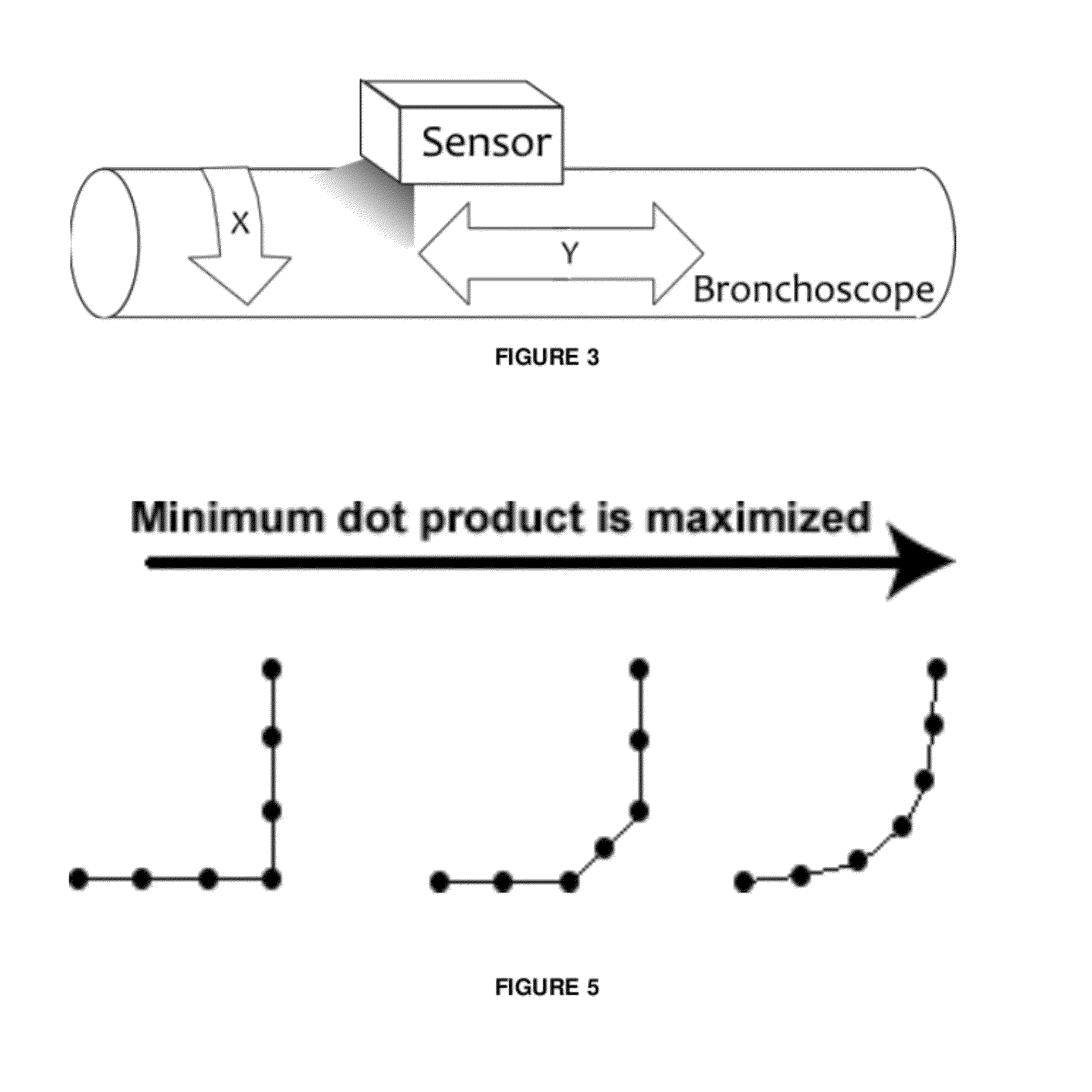Method and device for determining the location of an endoscope
a technology of endoscopy and location, which is applied in the field of image-guided endoscopy, can solve the problems of electromagnetic signal noise, enb system suffer from patient motion (breathing, coughing, etc., and different skill levels
- Summary
- Abstract
- Description
- Claims
- Application Information
AI Technical Summary
Benefits of technology
Problems solved by technology
Method used
Image
Examples
Embodiment Construction
[0023]To overcome the drawbacks of ENB and image-based bronchoscopy systems, we propose a fundamentally different method. Our method compares real-time measurements of the bronchoscope movement to precomputed insertion depth values in the lungs provided by MDCT-image-based bronchoscope-shape models. Our method uses this comparison to provide a real-time, continuous prediction of the bronchoscope tip's location and orientation. In this way, our method then enables continuous procedure guidance irrespective of adverse events. It also enables technician-free guidance.
Branching Organ Representation
[0024]Let M be a 3D MDCT scan of the patient's airway tree N. While we focus on bronchoscopy, the invention is applicable to any procedure requiring guidance though a tubular structure, such as the colon or vasculature.
[0025]A virtual N is segmented from M using the method of Graham et al. [10]. This results in a binary-valued volume:
v(x,y,z)={1,iflisinsideN0,otherwise(1)
representing a set of ...
PUM
 Login to View More
Login to View More Abstract
Description
Claims
Application Information
 Login to View More
Login to View More - R&D
- Intellectual Property
- Life Sciences
- Materials
- Tech Scout
- Unparalleled Data Quality
- Higher Quality Content
- 60% Fewer Hallucinations
Browse by: Latest US Patents, China's latest patents, Technical Efficacy Thesaurus, Application Domain, Technology Topic, Popular Technical Reports.
© 2025 PatSnap. All rights reserved.Legal|Privacy policy|Modern Slavery Act Transparency Statement|Sitemap|About US| Contact US: help@patsnap.com



